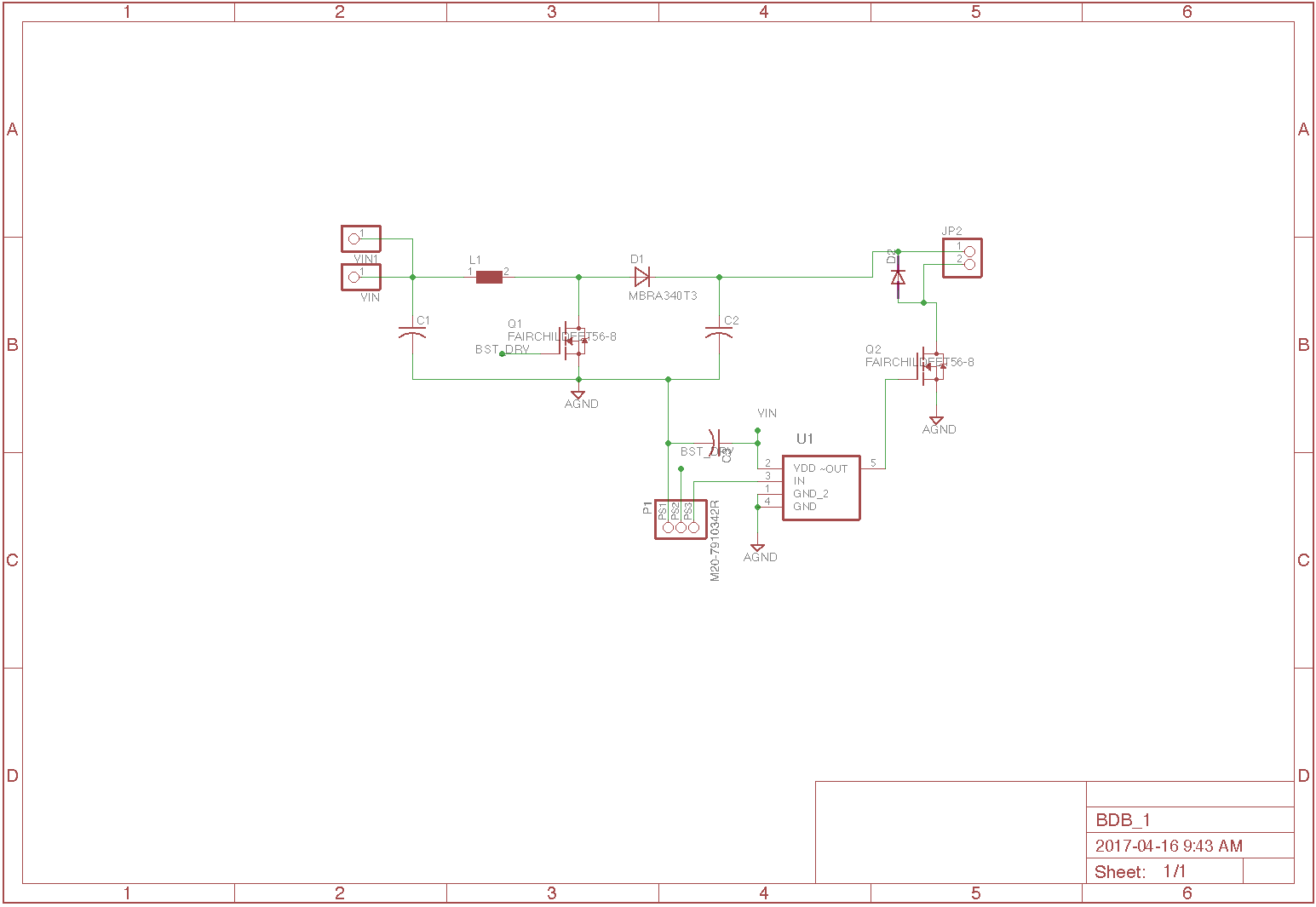Initial testing of putting a solenoid drive as opposed to the servo drive is looking good! The plan is to use a simple boost converter to step up my battery voltage enough to fire the solenoid. In the interest of testing this thing as quick, cheap and easily as possible, I made a small daughter board that will plug into the servo connector on the TrapBox board.
I'm making use of the 3-pin header that used to drive the servo in order to drive the BDB board. I removed the servo circuitry, which consisted of a few transistors to power up the servo (and allow it to be powered down when not in use to minimize overall power consumption) and a big filter cap for bypassing servo power. I kluged on a gate driver to drive a ~130kHz, 40% switcher for the Boost drive. I found that when the boost output is unloaded it will get up to ~40VDC! What I'm currently doing in software is waiting for a few cycles after turning on the switcher, then turning on the low-side gate driver on the solenoid...This lets the voltage get up to ~16V before hitting the solenoid, I'm hoping that extra 'umph' is going to help.
So the 3-pin header gives me GND, Boost Switch Drive and Solenoid low-side FET drive. I used a wire to bring in VIN to feed the Boost. I'll tweak this design and try to get reliable operation using components small enough to squeeze onto the Trap Box board, then re-spin that board to have everything incorporated onto it.
Here's a video of this in action...Audio quality is horrible, my phone's microphone is picking up the 40kHz drive for the ultrasonic transducer...Better quality to come!
 roger_archibald
roger_archibald
Discussions
Become a Hackaday.io Member
Create an account to leave a comment. Already have an account? Log In.